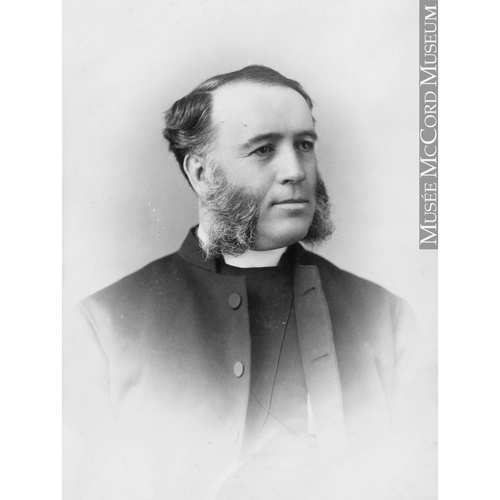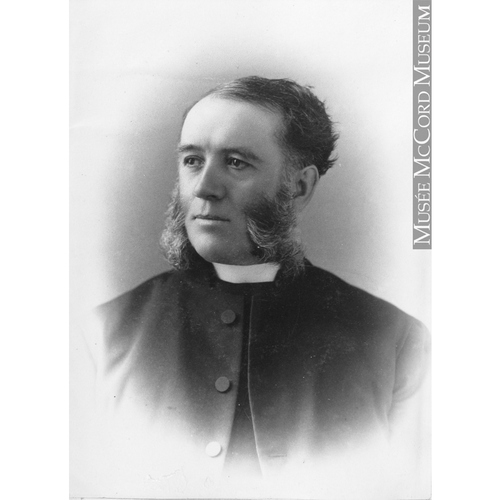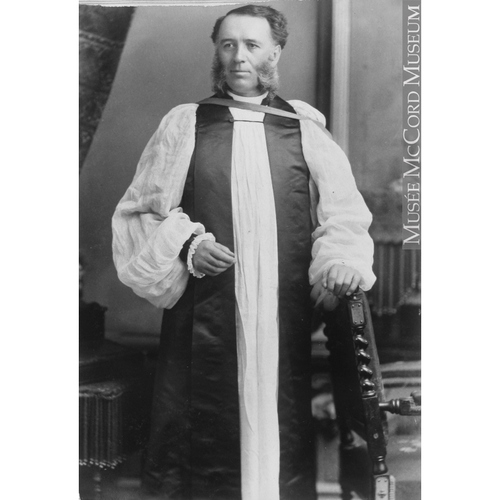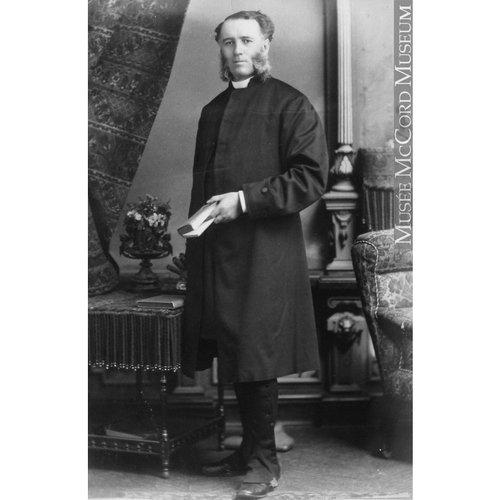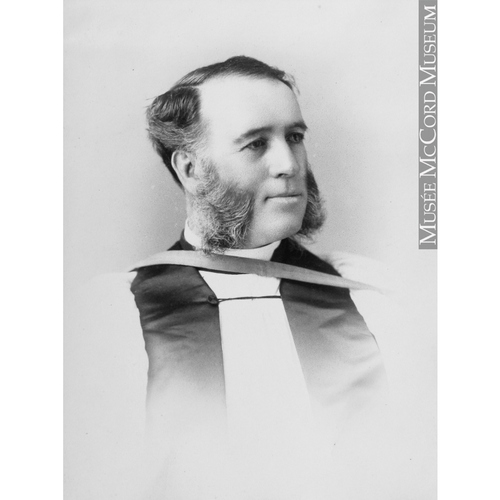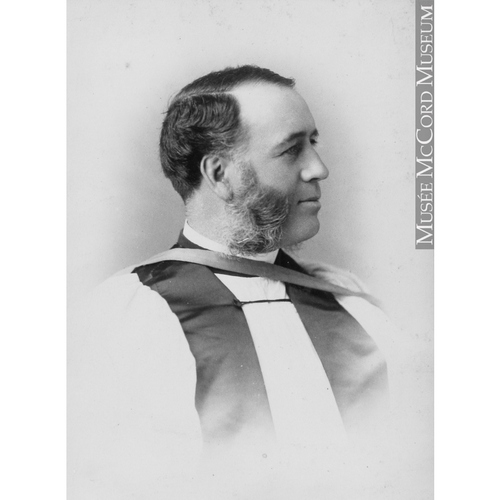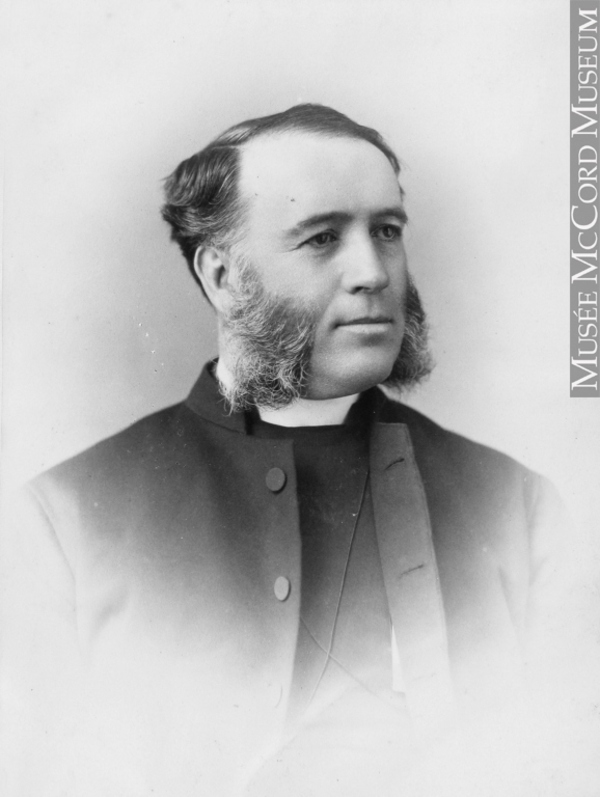
Source: Link
SULLIVAN, EDWARD, Church of England clergyman and bishop; b. 18 Aug. 1832 in Lurgan (Northern Ireland), son of a Wesleyan Methodist minister; m. first c. 1860 Mary Hutchinson in London, Upper Canada; m. secondly 24 Oct. 1866 Frances Mary Renaud in Peterborough, Upper Canada, and they had two sons, including Edward Alan*, and three daughters; d. 6 Jan. 1899 in Toronto.
The available information on Edward Sullivan’s early life is sketchy, but it seems that his mother died when he was quite young. After attending schools in Bandon and Clonmel (Republic of Ireland), he entered Trinity College, Dublin, in 1852 and graduated ba in 1858. While in Dublin he came under the influence of Charles Fleury, a priest of the Church of Ireland who conducted a Bible class which was attended by large numbers of young men. The circumstances of his confirmation in the Anglican communion are unknown; possibly it took place at this time. In 1858 Fleury returned from a visit to Upper Canada and told of the need for missionary clergy in the new diocese of Huron. Sullivan, John Philip DuMoulin, and James Carmichael were among those who volunteered.
Sullivan was ordained deacon in Upper Canada in December 1858. The following June he was priested by Benjamin Cronyn*, the bishop of Huron. After four years as a curate at St George’s Church in London Township, and six as assistant to William Bennett Bond* at St George’s Church in Montreal, in 1868 Sullivan was appointed rector of Trinity Church in Chicago. There he was spoken of as one of the most notable of an outstanding succession of clergymen, “a remarkable man with a strong and forceful personality.” A militant low churchman, he fought successfully against the election of George Franklin Seymour as bishop of Illinois in 1876, and for his efforts he received an honorary std from the University of Chicago.
In 1879 Sullivan returned to Montreal to become rector of St George’s, and three years later he was elected and consecrated the second bishop of Algoma, succeeding Frederick Dawson Fauquier*. The diocese, which had been founded in 1873, consisted of a vast area in northern Ontario from the head of Lake Superior to the Muskoka region north of Toronto, and much of it was undeveloped. Like his predecessor, Sullivan travelled from end to end of the territory, making his headquarters at Sault Ste Marie. Initially there were few railway lines, and journeys were often by buggy, boat, or snowshoe. In order to make water travel easier he purchased a yacht which had belonged to the Prince of Wales and learned to sail.
The financial problems of Algoma on Sullivan’s accession were great. Money was urgently needed to build churches and mission houses and to pay the clergy who would occupy them. Moreover, the endowments available in older dioceses, such as those for episcopal support, widows and orphans of clergy, and pensions for clergy, were almost completely lacking in Algoma. Like many bishops of his generation, Sullivan became a “mitred mendicant” and spent much time appealing for donations during extended tours of the United Kingdom. His speaking ability and charisma were of great help, and he gathered large sums, $6,000 on one tour in 1888. Thanks to his efforts, all the diocesan endowments improved markedly during his episcopate.
Of no less importance to Sullivan was the need to recruit clergy for the expanding population of the diocese as settlement moved northward. Unfortunately, the often primitive conditions caused many clergy to leave after a few years for easier parishes in the south, and Sullivan was constantly forced to seek out promising men. Despite these difficulties, the number of missionaries increased from 15 to 26 during his term. While he did not duplicate the success of Fauquier among the Indians in the diocese, he managed to establish two Indian schools.
In 1892 a financial crisis and the resignation of the head of the Indian schools, Edward Francis Wilson*, combined with the years of travel and constant work to cause Sullivan to suffer a nervous breakdown. After a leave of absence convalescing in southern France, he resumed his duties in August 1893, but his health continued to deteriorate. Despite further trips to France, he never fully recovered, and in September 1896 he resigned his see. As a tribute to his abilities he was appointed rector of St James’ Cathedral in Toronto, but he held this position for only two years before his death on 6 Jan. 1899.
Representative Church Body Library (Dublin), File information on Edward Sullivan. Trinity College Library,
Cite This Article
F. A. Peake, “SULLIVAN, EDWARD,” in Dictionary of Canadian Biography, vol. 12, University of Toronto/Université Laval, 2003–, accessed April 4, 2025, https://www.biographi.ca/en/bio/sullivan_edward_12E.html.
The citation above shows the format for footnotes and endnotes according to the Chicago manual of style (16th edition). Information to be used in other citation formats:
| Permalink: | https://www.biographi.ca/en/bio/sullivan_edward_12E.html |
| Author of Article: | F. A. Peake |
| Title of Article: | SULLIVAN, EDWARD |
| Publication Name: | Dictionary of Canadian Biography, vol. 12 |
| Publisher: | University of Toronto/Université Laval |
| Year of revision: | 1990 |
| Access Date: | April 4, 2025 |


